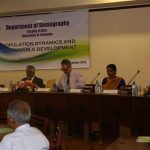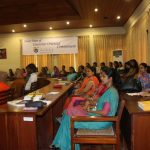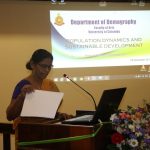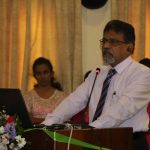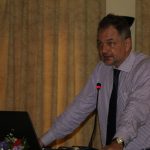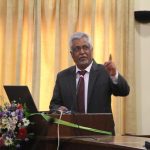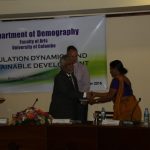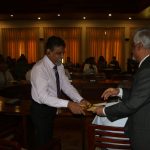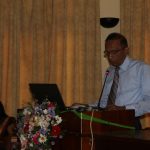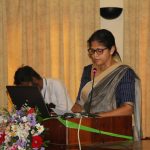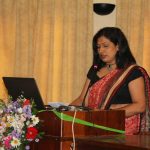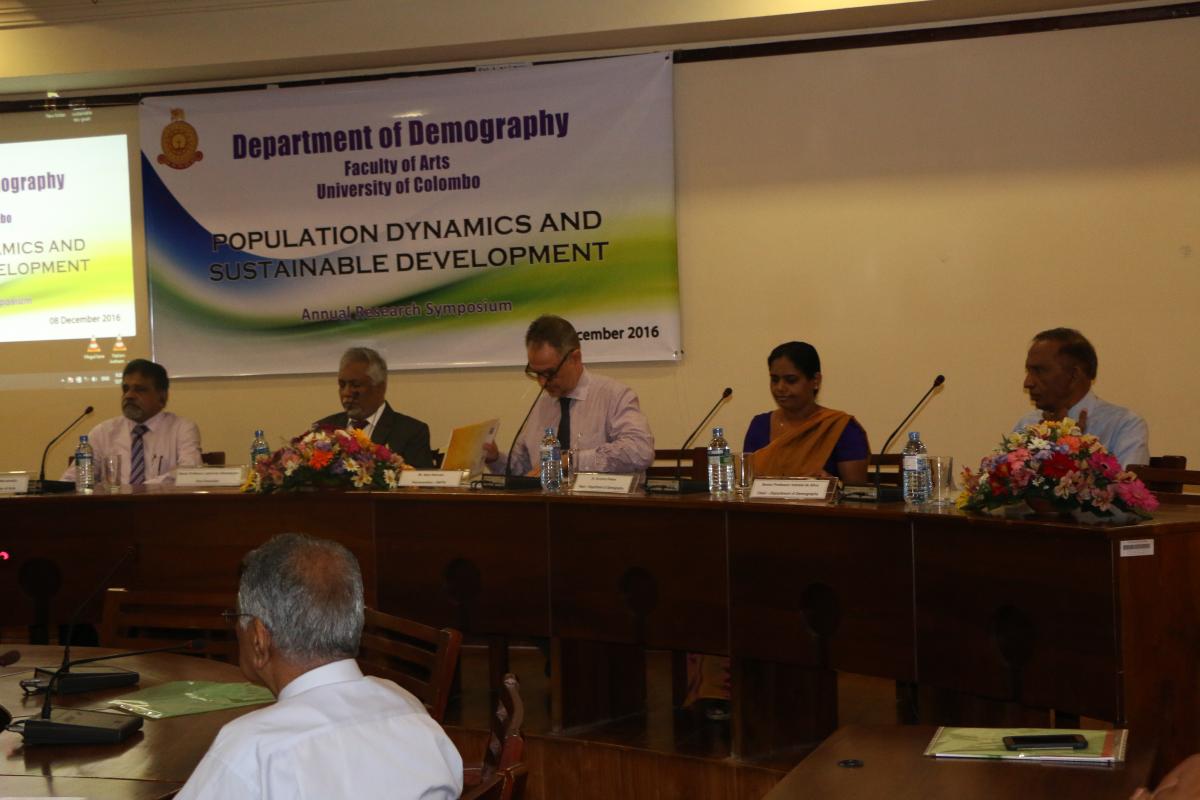
Annual Research Symposium 2016 – Department of Demography
The Annual Research Symposium of the Department of Demography, under the main theme of “Population Dynamics and Sustainable Development”, was held on 8th December 2016, at Faculty of Arts, University of Colombo, .
Sub-themes:
- Fertility and Reproductive Health
- Population, Health and Poverty
- Migration and Urbanization
- Population Aging and Long Term Care
- Interdisciplinary Studies, Education, Environment and Development
Mr. Alain Sibenaler, Country Representative, the United Nations Population Fund (UNFPA) was the Chief Guest and Senior Professor Lakshman Dissanayake, the Vice Chancellor of the University of Colombo and Senior Professor of Demography delivered the Keynote Speech.
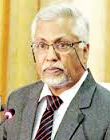
Keynote Speaker
Senior Professor Lakshman Dissanayake
Vice Chancellor, University of Colombo and Senior Professor of Demography

Chief Guest
Mr. Alain Sibenaler
Country Representative, UNFPA
Demographic Components of Future Population Growth in Sri Lanka
Senior Professor Lakshman Dissanayake
Vice Chancellor, University of Colombo
This paper presents the contributions of each demographic component-the current age structure of population, fertility, mortality and migration-to future population growth in Sri Lanka. Quantifying the roles of the demographic drivers of future population trends is important for developing policies and programmes aimed at balancing impending demographic changes and social, economic and environmental objectives. Contributions of demographic components have been estimated by constructing a series of appropriate cohort-component population projections: Standard, Natural, Replacement and Momentum. The analysis is based on the 2012 census of Sri Lanka.
The analysis presented in this study quantifies the contribution of the current age structure of a population, fertility, mortality, and migration to future population growth. To measure the contribution of a single demographic component, this report relies on a procedure proposed by Bongaarts and Bulatao (1999). It consists of constructing a series of appropriate cohort-component population projections.
The series of projections starts with a Standard population projection, which incorporates effects of all four demographic components. For our analysis the Standard population projection is set equal to the Medium variant derived by Dissanayake (2016). This projection starts with population by age and sex in 2012 and projects future population trajectories up to 2037 based on expected trends in fertility, mortality and net international migration. The effect of migration is estimated by constructing a Natural population projection variant, which is derived from the Standard variant by setting net migration to zero. Population growth in this case is driven only by natural increase based on assumptions about future fertility and mortality and by the initial age distribution. The difference in total population between the Standard and Natural variants shows the effect of net migration on future population growth. The effect of fertility is estimated by a Replacement projection variant, which is derived from the Natural variant by setting total fertility at the replacement level for each five-year projection periods. The difference between the Natural and Replacement projection variants shows the effect of total fertility, above or below replacement level, on the overall population growth. The last projection variant, Momentum, is constructed by using as of 2012 constant mortality rates, constant fertility at the replacement level and by setting net migration at zero. Computing the difference in total population between the Replacement and Momentum variants shows the effect of anticipated mortality decline on future population size. It is important to note that trends in mortality between birth and the reproductive ages are taken into account by the changes that occur in the replacement levels of fertility. The difference between the Replacement and Momentum projections therefore measures only adult mortality above the average age at childbearing.
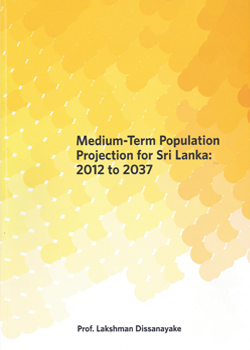
The book titled “Medium-Term Population Projection for Sri Lanka: 2012-2037” written by Senior Professor Lakshman Dissanayake, the Vice Chancellor of the University of Colombo was launched at this event.




